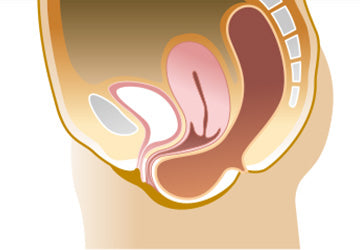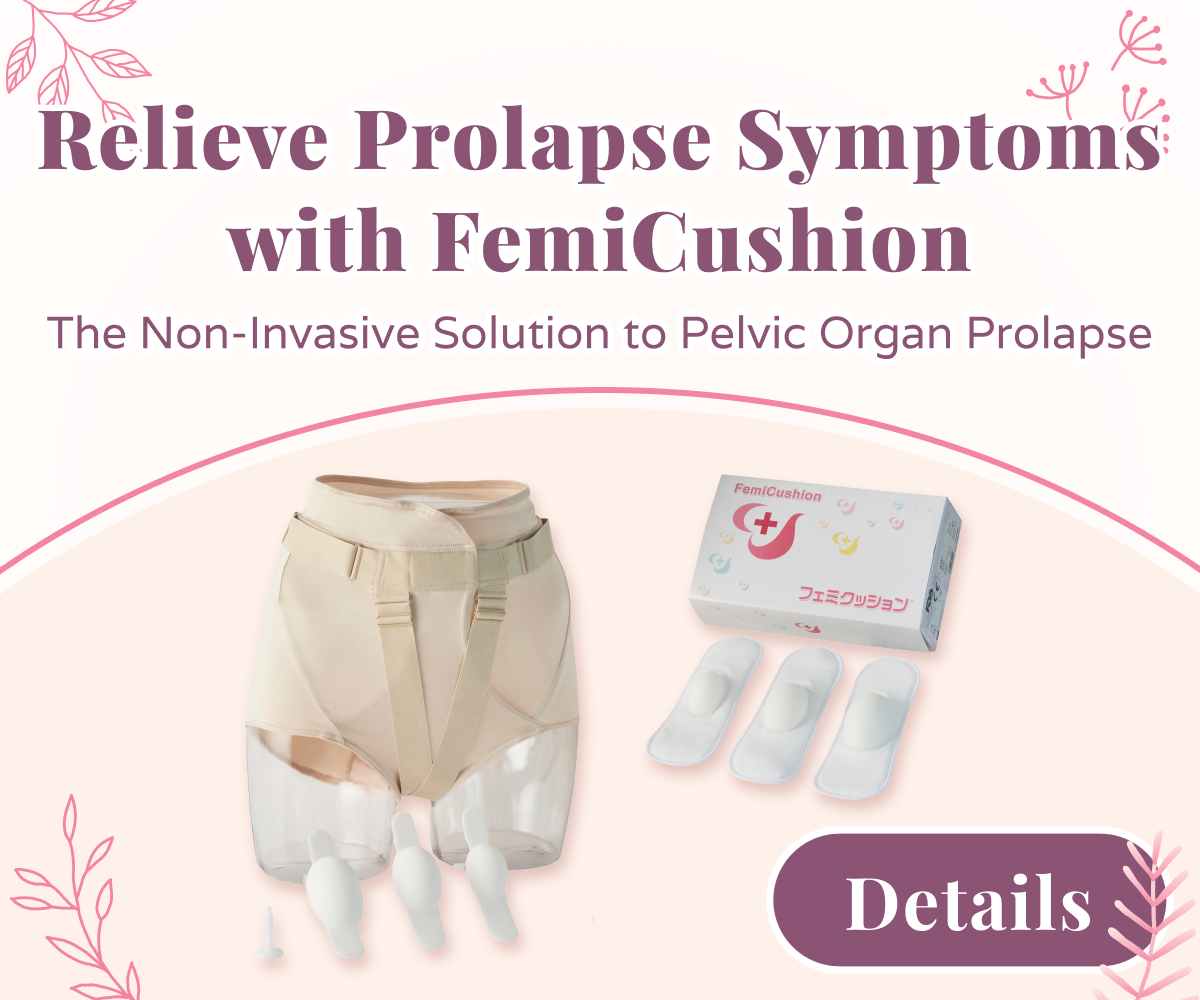What Is Pelvic Organ Prolapse?
Affecting more than 20 million women worldwide, Pelvic Organ Prolapse (POP) leads to around 200,000 corrective surgeries and procedures annually in the United States. What is pelvic organic prolapse? It is a prolapse, or a "falling out of place," of the pelvic organs from their regular healthy positions. The causes of prolapsed organs can vary from giving birth to having a hysterectomy, or even for no identifiable reason.

Although pelvic organ prolapse may not be life-threatening, it is a life-altering condition that can cause stress and anxiety.
Pelvic Organ Prolapse Symptoms
Pelvic organ prolapse (uterine prolapse, bladder prolapse, etc.) symptoms include difficulty with urinating and bowel movements, as well as pain during sexual intercourse. Along with these symptoms, discomfort, pain, bleeding, and a drooping or sagging feeling can occur.
In spite of the tremendous discomfort, many women feel that they cannot talk with their family or friends about this problem. However, if symptoms are ignored, they will only become worse.
Initial Prolapse Symptoms:
- Feeling something in your pelvic area when bathing
- Feeling as if something is pushing against you when sitting
- Discomfort in the abdomen
- Frequent urination or frequent urgency to urinate
- Constipation
- Bleeding and spotting
- Symptoms become stronger in the afternoon or evening

Feeling something in your pelvic area when bathing

Feeling as if something is pushing against you when sitting down

Discomfort in the abdomen

Not feeling relieved even after using the toilet

Symptoms become stronger in the afternoon or evening
Relief with FemiCushion

FemiCushion is a natural, at-home prolapse treatment option that works. Completely non-invasive, FemiCushion keeps organs inside the body and is the perfect solution for women who wish to avoid pessaries or surgery.
Do any of these conditions match what you go through every day?
- I'm unable to stand for long periods of time.
- I have difficulty doing housework like cooking and vacuuming.
- I have difficulty shopping at the supermarket.
- I have difficulty climbing stairs even at home.
- I worry that all I can do is sit at home.
- My symptoms stop me from going out with friends and family.
If so, FemiCushion can help you improve your pelvic organ prolapse and help you reclaim your life!
Typical Prolapse Symptoms and Conditions
 |
Uterine ProlapseWith uterine prolapse, the uterus falls down into the vagina, pulling on ligaments and causing pain. If symptoms progress, the uterus begins to descend outside the body, accompanied by pain and bleeding. |
 |
Bladder ProlapseBladder prolapse, also known as cystocele, is the most common pelvic organ prolapse. It is a condition where the bladder falls down into the vagina. In the beginning, many women with bladder prolapse suffer from urinary incontinence. As the condition progresses, the bladder becomes lower than the urethra, so urine is cut off and is not sufficiently released even after urination, or urinating becomes difficult. If this happens, the flow of urine from the kidneys to the bladder is also impaired, resulting in hydronephrosis and renal failure. |
 |
RectoceleIn this condition, the rectum begins to bulge into the vagina, causing constipation or other difficulties with bowel movements. Depending on the severity of the condition, some women can only empty their bowels by pushing the rectum that has fallen into the vagina back into place by hand. |
 |
EnteroceleEnterocele and vaginal vault prolapse can occur when the uterus has been surgically removed and the innermost part of the vagina hangs down. |
Pelvic Organ Prolapse Causes
There are many causes of pelvic organ prolapse, but chronically applying pressure on the abdomen is one that is not often considered. Some of the ways this can occur are:
- Asthma
- Hay fever
- Work that requires you to stand
- Farming
- Gardening
- Certain sports
- Constipation
- Obesity
Putting constant pressure on the abdomen with a corset or girdle for long periods of time, or lifting heavy objects while doing daily tasks can also lead to pelvic organ prolapse.
Menopause and aging are also major factors, and women who have previously had a hysterectomy are more susceptible. This causes a loss of support in the pelvis because the uterus was previously supported by ligaments. In addition, because a cavity is formed in the abdomen, other organs may begin to descend.
Risks due to childbirth include having:
- Had a vaginal delivery
- Given birth to a large baby over 3,500 grams (7.7 pounds)
- Given birth at a later age
- Had perineal incisions
- Smoked during pregnancy
There are also cases in which the uterus comes out with the baby (sudden uterine prolapse) through vacuum-assisted delivery or the use of forceps during delivery.
Pelvic Organ Prolapse Treatments
There are two main treatment categories for pelvic organ prolapse.
- Non-surgical treatments
- Surgery
Which treatment option you choose depends on a variety of factors, including:
- Type of prolapse
- Degree of progression
- Severity of symptoms
- Age
- Physical condition
- Whether or not you want to have children
- Lifestyle
People can now consider a new treatment option: FemiCushion. For women with early- to middle-stage prolapse, FemiCushion helps prevent symptoms from progressing and improves mild prolapse conditions, as well as offering a temporary support solution before and after prolapse surgery.
FAQ about pelvic organ prolapse
Q)What are pelvic organ prolapse symptoms?
A)Common pelvic organ prolapse symptoms include:
- Pressure or heavy feeling in the pelvis and genital area
- Feeling as if something is pushing against you when sitting (feels like sitting on a ball)
- Pain and discomfort in the abdomen
- Seeing a lump coming down through the vaginal opening
- Frequent urination or frequent urgency to urinate
- Constipation or bowel incontinence
- Bleeding and spotting
- Symptoms become stronger in the afternoon or evening
Q)What is the best treatment for pelvic organ prolapse?
A) Effective treatment options for pelvic organ prolapse include:
- Pessary
- Surgery
- Pelvic floor exercises/therapy
- FemiCushion
FemiCushion is a natural, at-home prolapse treatment option that is effective for all types of pelvic organ prolapse. It is non-invasive meaning nothing is inserted into the body. FemiCushion uses a soft silicone cushion to support prolapsed organs inside the body and is the perfect solution for women who wish to avoid or are unsuitable for pessary use or surgery.
Q)Can pelvic organ prolapse correct itself?
A)Pelvic organ prolapse cannot correct itself. When left alone, the prolapse will most likely worsen over time.
Q) How do you get rid of pelvic prolapse?
A) There are different types of treatment options available to treat pelvic organ prolapse. They include vaginal pessaries, surgery, pelvic floor exercises/therapy, and FemiCushion.
FemiCushion is a natural, at-home prolapse treatment option that is effective for all types of pelvic organ prolapse. It is non-invasive meaning nothing is inserted into the body. FemiCushion uses a soft silicone cushion to support prolapsed organs inside the body and is the perfect solution for women who wish to avoid or are unsuitable for pessary use or surgery.
Q)Can pelvic organ prolapse be fixed without surgery?
A)For women who are not suitable or uncomfortable with undergoing surgery, they can look into pessary use, pelvic floor exercises, or external supports like FemiCushion. It is recommended to discuss with your doctor to find a treatment option that is best suitable for you and your prolapse.
Q)Is walking OK for pelvic prolapse?
A)Pelvic organ prolapse may cause women to have difficulty in completing day to day tasks and even walking can be difficult. Treatments like FemiCushion, pessary, or surgery can alleviate painful prolapse symptoms, helping women return to an active lifestyle.
Q)Can I push my prolapse back up?
A) Depending on the severity of the prolapse, it can be possible to push it back into the body. However, this can be painful and uncomfortable. Without an external support like FemiCushion or the use of a pessary, the prolapsed organ(s) can easily fall back out of the body due to gravity.
FemiCushion is a natural, at-home prolapse treatment option that is effective for all types of pelvic organ prolapse. It is non-invasive meaning nothing is inserted into the body. FemiCushion uses a soft silicone cushion to support prolapsed organs inside the body and is the perfect solution for women who wish to avoid or are unsuitable for pessary use or surgery.


